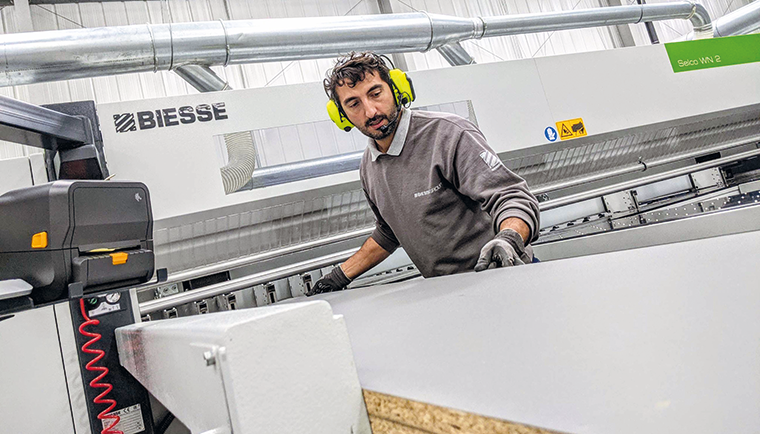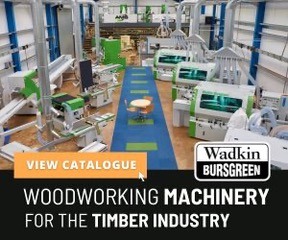Biesse can now supply its SELCO SK4 and WN250 beam saws – including those with automatic storage – with productivity-boosting Front Aligners.
Biesse’s SELCO beam saws can either be loaded from the front or from the back. Rear loading is either via an integrated lift table or an automatic loading system that picks panels and places them into the back of the beam saw.
Even though both loading methods are automated, there is no guarantee that the panels in the stack will be aligned with one another. In order to achieve an accurate, parallel cut, it is essential that the boards are aligned and correctly positioned at the cutting line.
Why manual alignment isn’t the answer
One way of ensuring this is to station an operator next to the beam saw to manually align the panels. The main drawback with this approach is that it is inefficient; the machine has to stop and alert the operator to align the stack.
The operator then has to physically push the panel stack against the grippers and then tell the machine it is aligned so it can continue with the cycle. There is also a health and safety consideration: panels are heavy and this is a strenuous, physically demanding and repetitive task to perform manually.

Front aligners to the rescue
To eliminate the need for manual intervention, Biesse has, for some time, equipped its larger machines (SELCO WN6 and above) with Front Aligners. These pneumatic devices automatically rise from the machine bed when the pusher is moving the stack towards the cut line; the grippers push the stack forwards until it reaches the Front Aligners.
Once the stack is in the correct position, the Front Aligners retreat, the grippers push the stack to the cutting line and the beam saw performs the cutting cycle.
Making technology accessible to all
In the past, Front Aligners were only available on larger machines. However, in line with its commitment to making its pioneering technologies accessible to all customers, Biesse has adapted the Front Aligner principle for its SK4 and WN250 series too. This required modification of the original design, which could not be accommodated within the available space.
Now, manufacturers of all sizes can benefit from the productivity, quality and labour saving benefits that this clever alignment technology brings to the woodworking and furniture industry.








